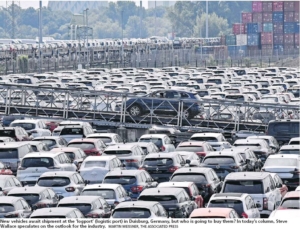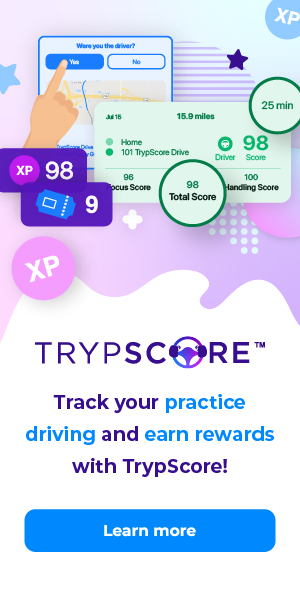Transport part of a massive change

It took a while before pedestrians noticed the cyclical traffic lights, which govern pedestrian crossing signals, had been switched from demand touch to regular conventional fixed interval lights. Drivers were equally surprised to be stopped by a solid-red traffic light, where no pedestrians were preparing to cross and no vehicles were present, at what was in fact a deserted intersection but for the single stopped vehicle. Pedestrian touch-demand functions had been disabled to combat the spread of the COVID-19 virus. The demand function of the looping magnetized pavement devices remains. They are easy to identify with the telltale pavement circle and diamond tar-covered cuts at intersections. This not-so recent-advancement in keeping the traffic moving is much appreciated by drivers everywhere. Low traffic areas, where pedestrians activate push buttons, do not seem to be affected.
Left turns onto a one-way street, after coming to a complete stop at the solid-red traffic light, with no vehicle or pedestrian interference, is catching on. With no demand function, drivers are more likely to avoid the unnecessary wait time when unencumbered by other modes of transportation, and vehicle traffic approaching from the right side at a one-way cross traffic intersection. There is more time to do such a move, with the present marked reduction in traffic volume.
Motor vehicle sales are understandably down. Boat sales are up, in fact through the roof, according to recent media reports. Think about it. What better way to social distance and have a holiday in a self-contained family environment? Can motorhome purchases be far behind? Motor vehicle sales may be low now, but the deals are attractive to buyers. Pent up vehicle purchase demand usually follows a period of low activity, such as we are experiencing with the COVID-19 reality. The used-car market is dubious. Many families and individuals have parked the second car because of financial considerations during this pandemic period. When money is tight, why not sell this idle asset and gain needed revenue? Will there be a glut? Who will buy these vehicles? In the near term it will be those who have not lost a revenue source during the pandemic. Pension income has been unaffected throughout the pandemic. Indispensable public workers are getting paid.
Many drivers have been surprised by the presence of alternate and unique forms of transportation.
Financial considerations have motivated people to jump on their bicycles. Inline skaters are a seasonal reality. Segway operators are not as novel as a few years ago, but more visible during this pandemic. Balloon tire bike riders, with electric motor assist, are perhaps the most surprising of all. They can reach speeds well above the common 50 kilometre-perhour inner city limit. Distancing and the economics of this financial downturn have made singular inexpensive travel more attractive. Motorized skateboards and single fat wheel ones, together with no-handle Segway models, are still a bit of a novelty.
Work from home is now the new normal for many government and corporate entities. Traffic volume reduction, as previously mentioned, is obvious.
Municipal parking ticket and metered revenue is down. Cities everywhere are in a cash crunch. Where will they get the money to maintain services? Motor vehicles have been the cash cow of the past for municipalities. Sales tax, both federal and provincial, has been a valuable financial resource for government.
Gas tax revenue will most certainly be reduced with so many people embracing hybrid and electric vehicle technology. Will there be a special additional tax levy applied to environmentally friendly vehicle purchases? Will residential taxes go up, as homes become workplaces?
We are experiencing a quantum societal and economic change not seen since the Great Depression of 1929. Transportation will likely be at the forefront.
Steve Wallace is the owner of Joan Wallace Driving School on Vancouver Island. He is a former vicepresident of the Driving Schools Association of the Americas, a registered B.C. teacher and a University of Manitoba graduate.


